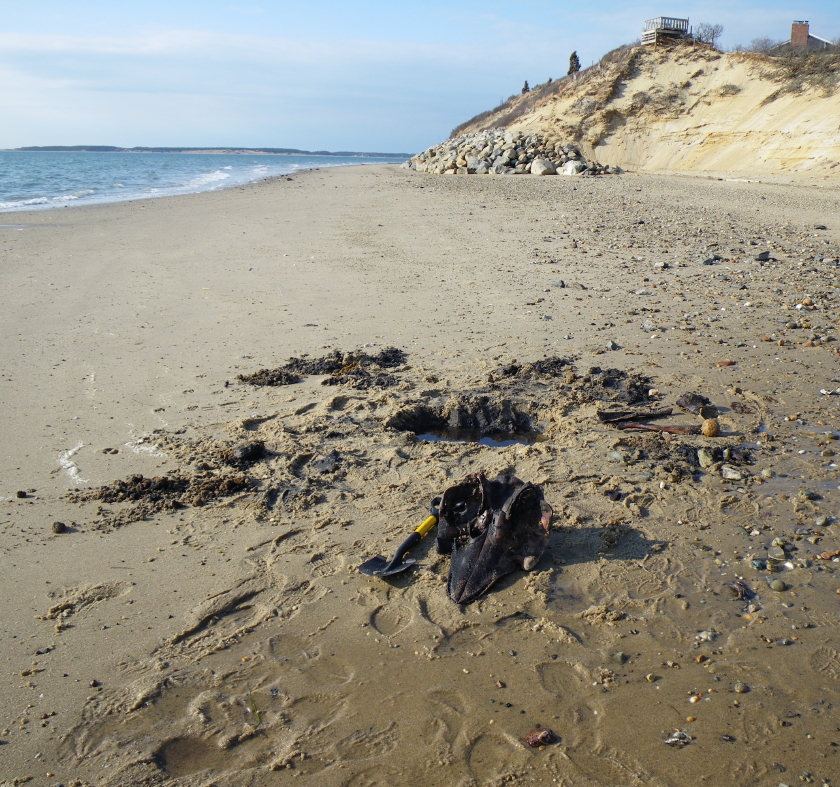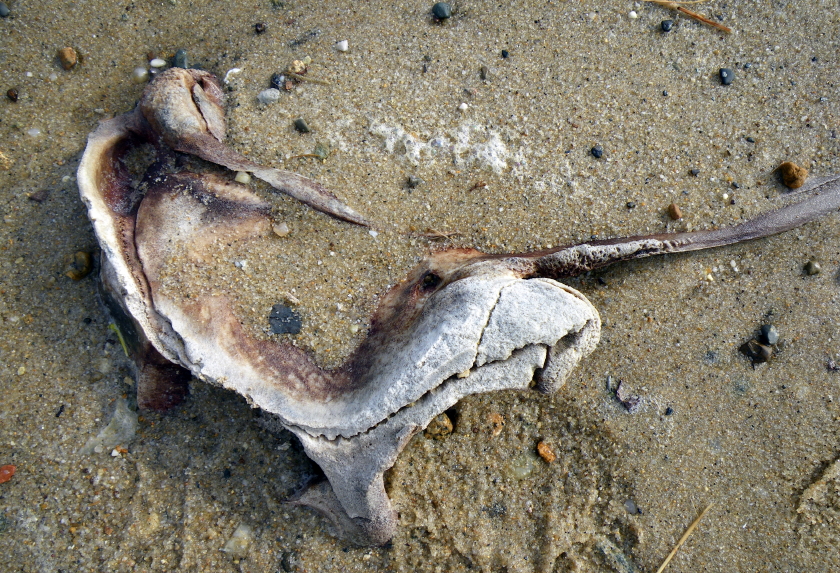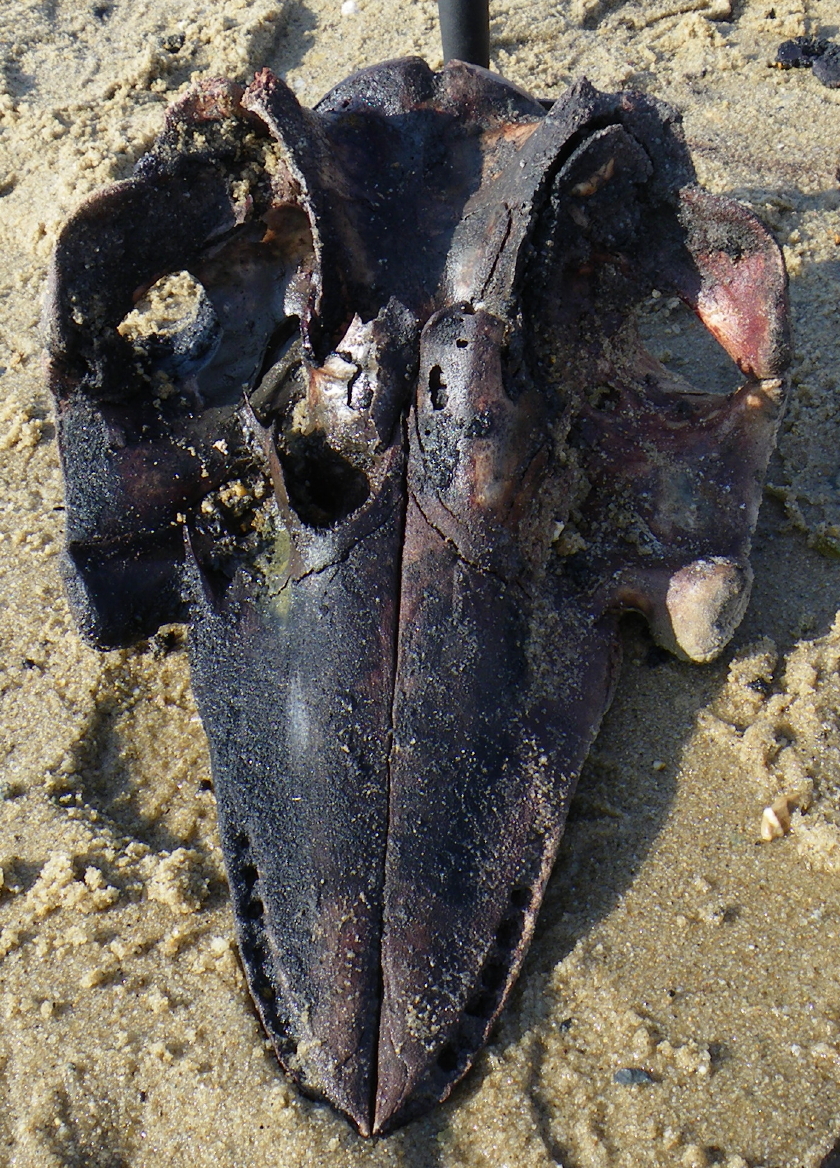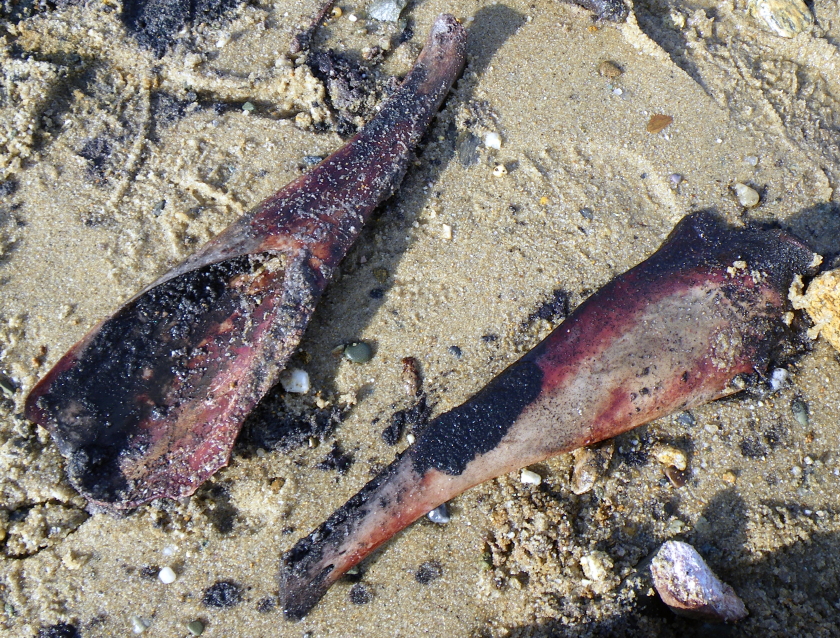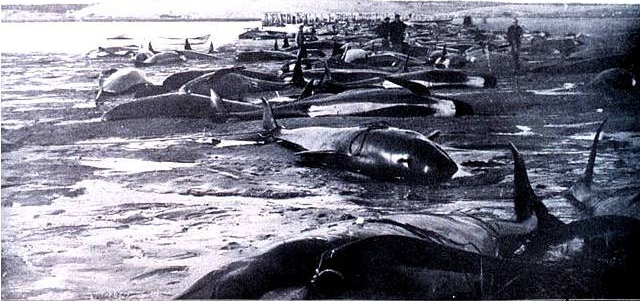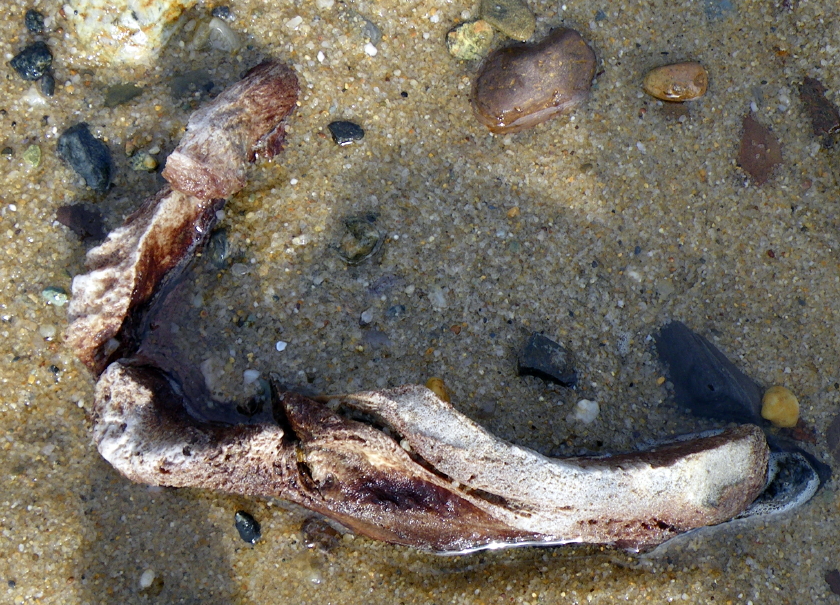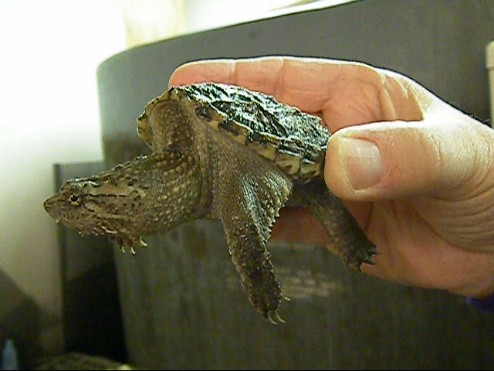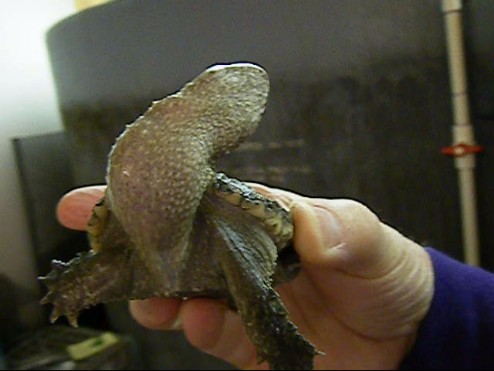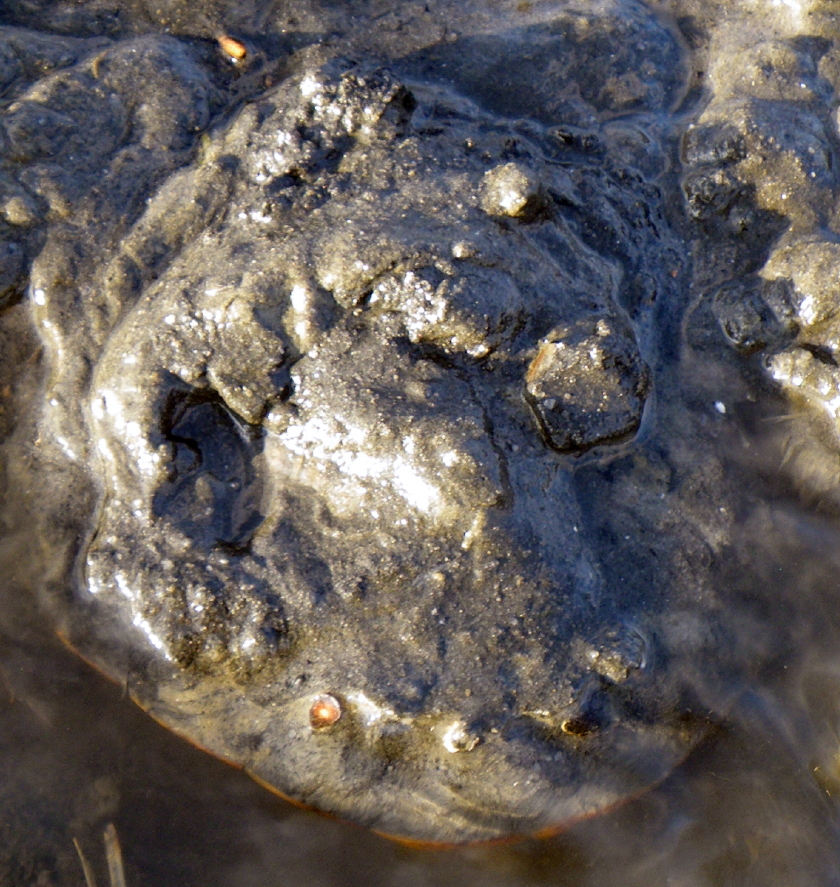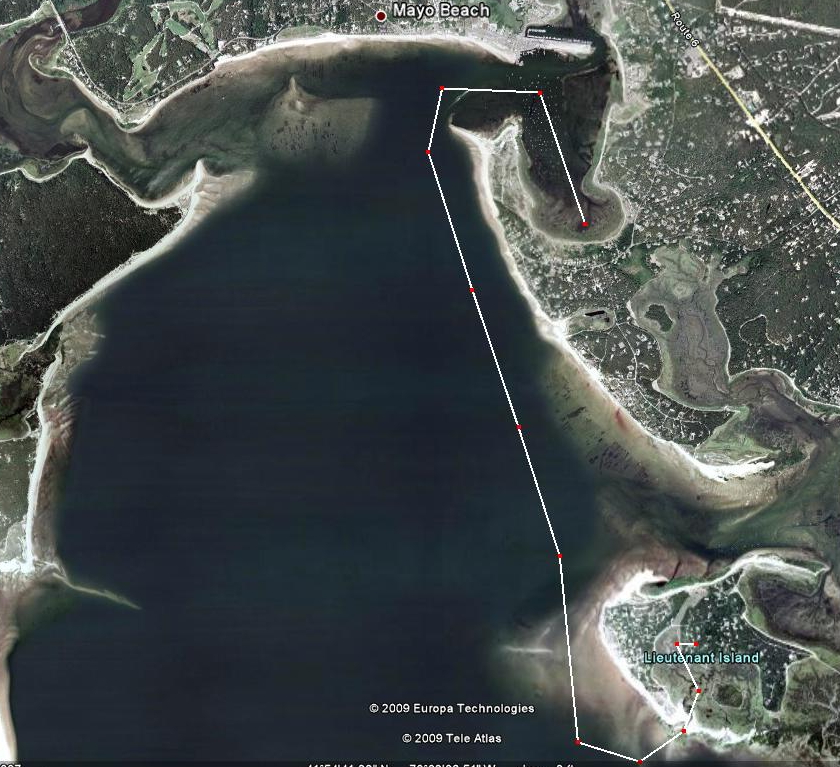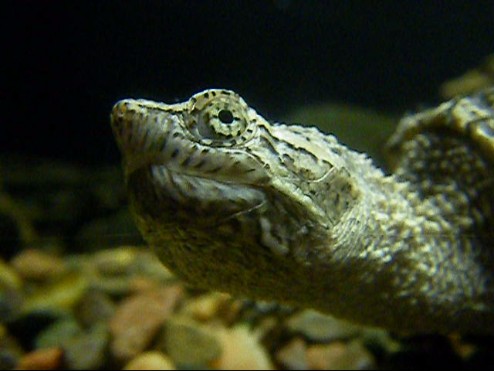Historic Pilot Whale Skull Discovered on Lieutenant Island
Winter storms and tides pounding Lieutenant Island’s west shore exposed a partially fossilized bone extruding from the low-tide drained beach. While I claim no credentials as an archeologist, and have only jokingly been analogized as part-Carl Sagan, part-Indiana Jones by a Cape Cod Times columnist, I’ve spent enough time scouring Outer Cape shorelines that I can detect even a fairly small and obscure anomaly … in the words of Big Bird, “something that doesn’t belong” … though I may not immediately understand its full scope and importance. And so it was yesterday, as I walked the shoreline to check for Asian shore crab activity off the Lieutenant Island seawalls.Â
Click to View Video in High Quality
Ancient Salt Marsh Peat Field, Southwest Lieutenant Island
Sue Wieber Nourse and I have been watching this area off the southwest coast of the island carefully for the last year, documenting the exposure of thick, rich peat from an ancient salt marsh that once held sway in this spot. Over the centuries, the inexorable advance of the bay has pushed the shoreline eastward, exposing and then subsuming this historic salt marsh within the inter-tidal zone. While every wash-ashore “knows” that erosion and tidal rise begins on the day the sale closes on their waterfront property, the barrier coastline of the Cape has defensively rope-a-doped with the sea since the last Laurentian glacier receded tens of thousands of years ago. To paraphrase another famous boxer, Joe Louis, “You can run, but you can’t hide.” Eventually, the sea wins. (ASIDE: If you don’t believe me, ask the former residents of Billingsgate Island!)
Partially Fossilized Bone Extruding from Beach
With my head down scrutinizing every stone and pebble just above the water line, I spotted a strangely shaped “rock,” which on closer examination gave me the feeling that a pilot whale skeleton might lay underneath. The edge of what I assumed was bone appeared to be in the process of fossilization, and rather than spongy, the bone seemed to be well preserved and “hard as rock” in the anoxic peat soil of the ancient salt marsh.
Click Here to View Video in High Quality
Excavation of Historic Pilot Whale Skull
The afternoon was cold and frigid winds whipped across the windward side of Lieutenant Island. The last thing I wanted to do was hike back over the dunes to the car, retrieve my too small excavation shovel, trudge back to the beach again and dig through wet, heavy peat to uncover a pile of rocks and sand, or worse yet to actually find an intact pilot whale skeleton. But conscience and curiosity overcame cold and inertia.Â
Excavated Pilot Whale Skull
A little investigation and a lot of perspiration yielded a well preserved pilot whale skull that someone must have buried in the ancient salt marsh, after trying or rendering the whale blubbler for oil perhaps a century or two ago.   (ASIDE: Trying is the process of boiling off the blubber to yield precious and very expensive whale oil.) This exciting discovery hints of the historic past of the Outer Cape as a subsistence coastal whaling community, just as it teaches us a tangible lesson about the constantly changing topography of Cape Cod as barrier dunes and salt marshes shift with the advance of tide and time.
Excavated Pilot Whale Jaw Bones
Only the head had been buried in the former salt marsh by whoever harvested these pilot whales. The rest of the carcass was missing. My intuition tells me that additional skulls have been buried in this peat field and will become exposed in the days ahead.
Click Here to View Video in High Quality
Excavated Pilot Whale Skull
Pilot whales, called blackfish by native Cape Codders, have stranded in Wellfleet Bay over the centuries. In ancient times, these strandings were more frequent and more massive, likely because pilot whale populations were equally larger. Unlike today, a pilot whale stranding was seen by the community as a bounty from God rather than a natural disaster. Subsistence level coastal whaling, practiced on Cape Cod for centuries before and after the arrival of Europeans, consisted first of passively exploiting pilot whale strandings and then more actively of driving blackfish into the shallows to strand. The animals were harvested and tried (rendering out the oil) on the shoreline. Try island on the Wellfleet Bay Wildlife Sanctuary is named for this historic activity. Carcasses, especially the skulls, were buried or sunken after trying in the abutting, oozy salt marsh.
1902 Pilot Whale (Blackfish) Stranding on Cape Cod Beach
The photograph above illustrates a “bountious” mass stranding on the shores of Cape Cod in 1902. Life on the Outer Cape is hard, and before the days of summer tourists, cell phones and the internet, life was a lot harder. The serendipitous stranding of 50 or 100 pilot whales offered the entire community a path to instant prosperity or at least winter survivability.Â
2002 Pilot Whale (Blackfish) Stranding off Lieutenant Island
One hundred years later, in 2002, I had the unique and unpleasant opportunity to be the sole eye witness to a mass standing of pilot whales off Lieutenant Island at  six in the morning one late July day. The story of that stranding is posted on the Turtle Journal site under the title Two Unforgettable Days and a video clip of my kayak paddle to the scene of the stranding can be viewed under Eye Witness to Mass Stranding.
1893 Map of Wellfleet Bay
This map of Wellfleet Bay from 1893 shows Lieutenant Island, then sometimes called Horse Island. (ASIDE: Yes, I can see the head of the horse on the top right, now called the Hook. The feet are found at the bottom right, now Turtle Point, and bottom left, the southwest beach.) Above (north and east) of Lieutenant Island is Blackfish Creek that earned its name because of pilot whale strandings. The 2002 blackfish stranding occurred south and east of Lieutenant Island, in a body of water called the Run. I found the buried pilot whale skull on the southwest beach in an area that had once been a protected salt marsh, but is now submerged in the inter-tidal zone. (SECOND ASIDE: In 1893, salt marshes on the north of Wellfleet Bay had not yet been destroyed by construction of the dike blocking the Herring River and the commercial dock and harbor. Terrapins would have LOVED ancient Wellfleet!)
Another Exposed, Partially Fossilized Pilot Whale Bone
About 50 feet south of the spot where I found the first exposed, partially fossilized bone, I encountered another exposed bone. I did not excavate this bone to discover what might lie below. I suspect there will be additional sightings in the next few weeks in this former salt marsh peat field. Once spring arrives and summer beaches return, these exposed bones will likely disappear once again.
